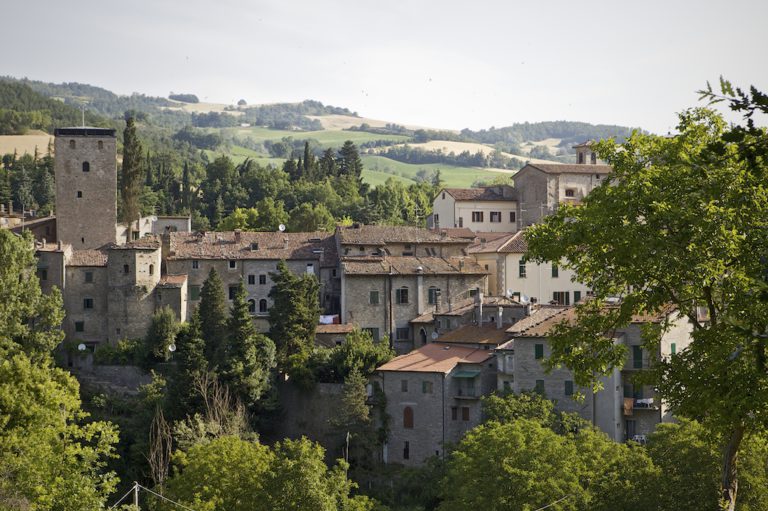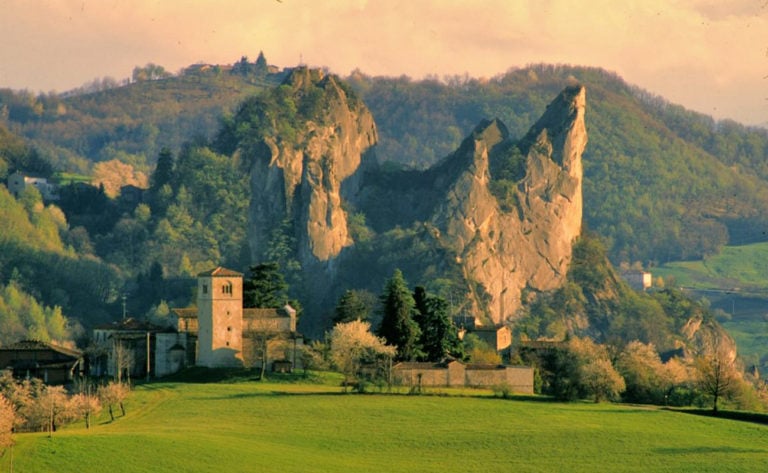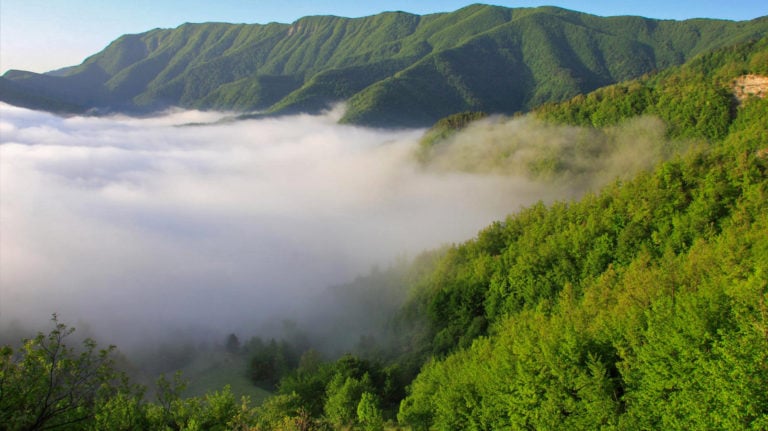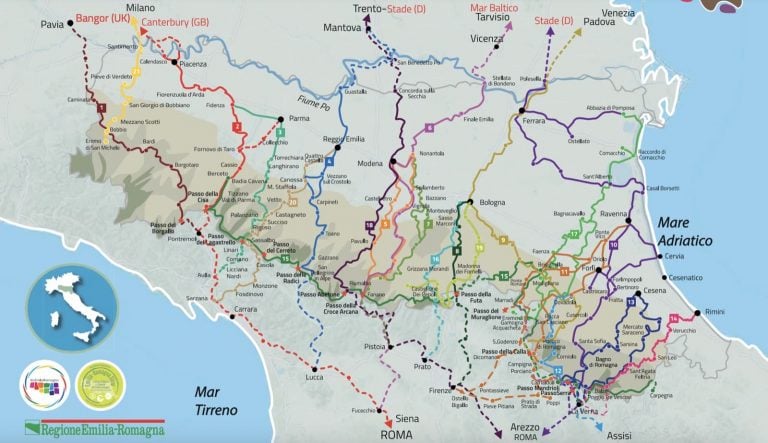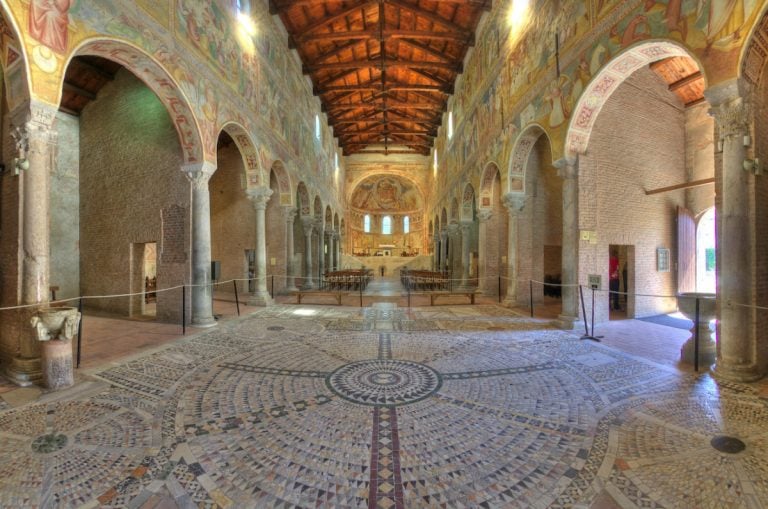Climbing up the valley of the Montone river, on the border between Emilia-Romagna and Tuscany, you will glimpse on the horizon, hidden behind sweet hills, San Benedetto in Alpe, one of the most suggestive hamlets of the area of the Foreste Casentinesi, Monte Falterona and Campigna National Park.
San Benedetto in Alpe is the last stop of Romagna, just before the well-known mountain pass Passo del Muraglione; it is the ideal departure point for an excursion to the amazing Waterfalls of Acquacheta, praised by Dante Alighieri in the 16th canto of Inferno.
As is generally known, the charm of these landscapes struck the Supreme Poet, who happened to pass from here in 1302, during his journey to Forlì. He was left so amazed that he compared the roaring of the waterfalls to the infernal river Flegetonte.
And as the stream, which is the first that eastward
from Monte Veso takes a separate course
upon the left slope of the Apennines,
and which above is Acquacheta called,
before it flows into its lowly bed,
and at Forlì is of that name deprived,
booms loud, because of falling o’er a cliff
above San Benedetto of the Alp,
where for a thousand there should refuge be
(Hell, Canto XVI, vv. 94-102)
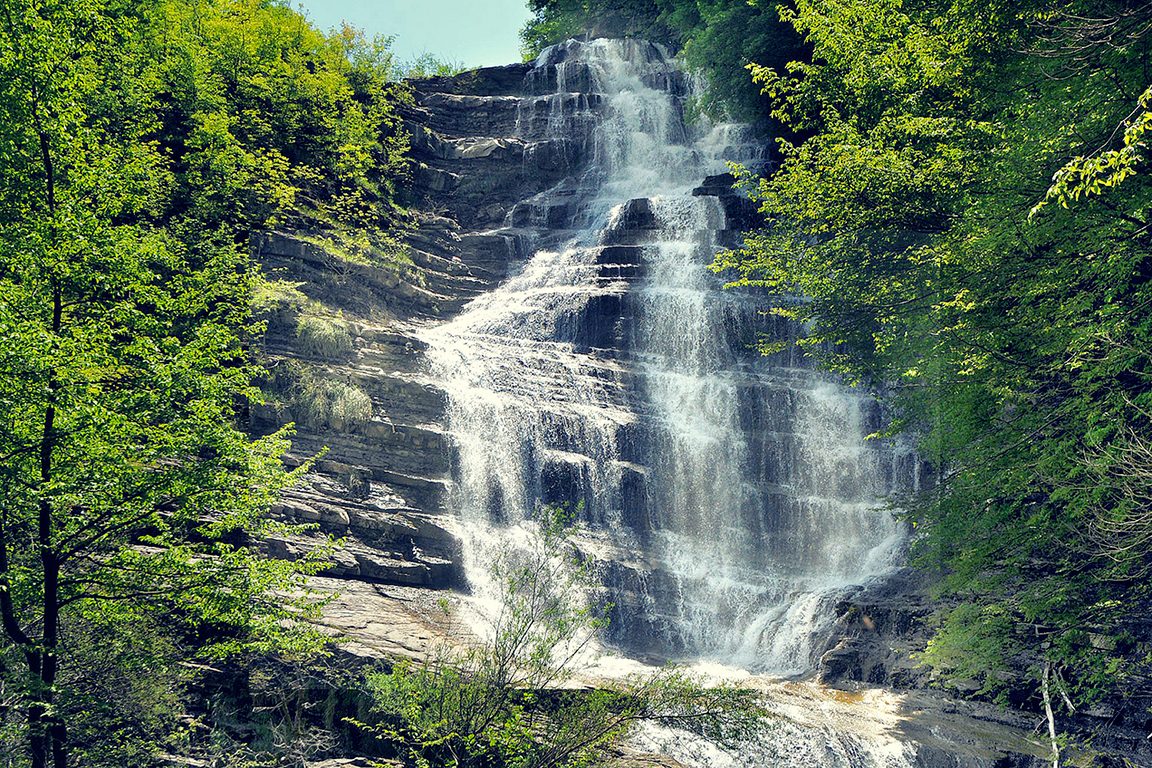
The Waterfalls of Acquacheta | Photo ©parcoforestecasentinesi.it
But the fortune of this mountain place – as the name itself – stems from an important abbey that was founded around the first half of the 11th-century AD by San Romualdo in the area of ‘Il Poggio’, 1 km above the village, whose aim was presumably to help the centres of hermitage that were already there.
In just a century, the ruling abbots turned this complex into one of the wealthiest abbeys in the Tuscan-Romagnol Apennines, with lands that stretched up to the diocheses of Forlì, Forlimpopoli, Faenza, and Florence (12th -13th century).
It was a noteworthy escalation, proven by the parchments of the abbey preserved in the Chapter Archives of the Basilica of San Lorenzo in Florence, which are for the most part dating back between the 12th and the 15th-century AD.
It is right in this so-called “Golden Age” that Dante was enthralled by the Waterfalls of Acquacheta, and not much later writer and poet Giovanni Boccaccio came here and found the inspiration to write his commentary on Inferno.
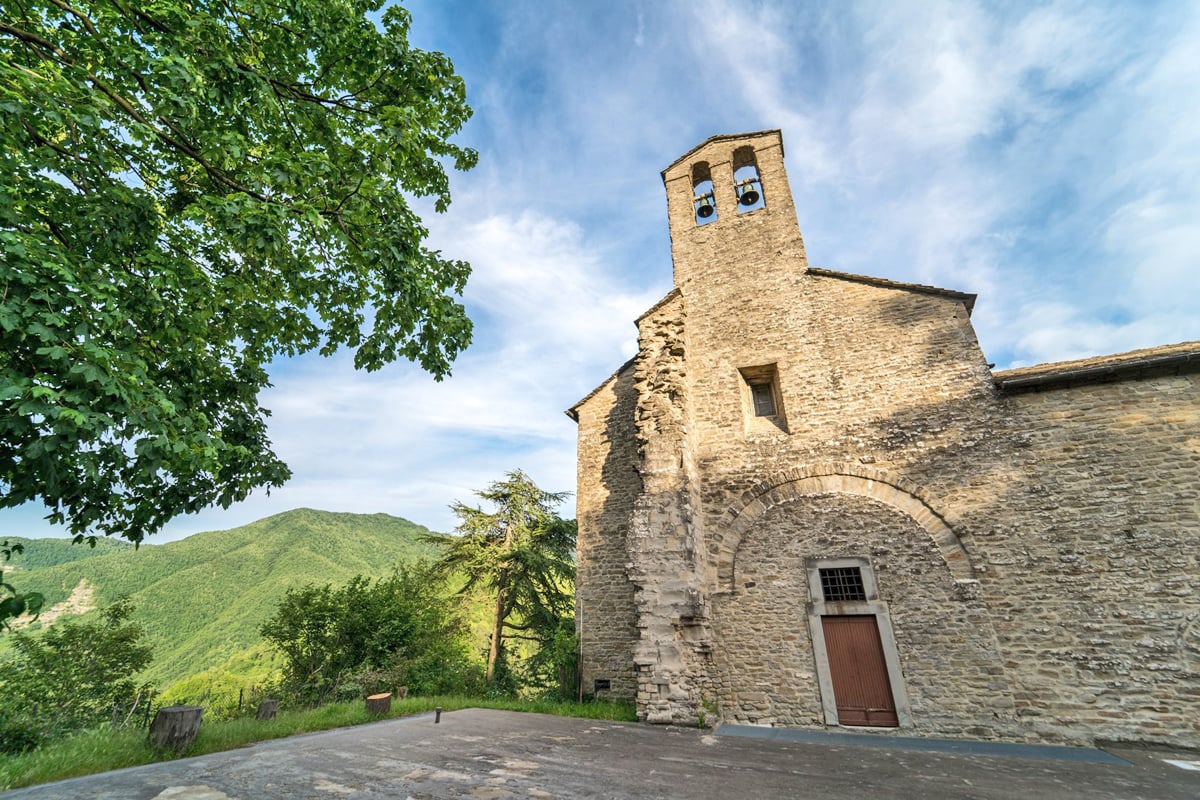
The abbey of San Benedetto in Alpe | Photo ©romagnatoscanaturismo.it
Things began to change and decline helplessly starting from the 14th and 15th centuries when the abbey gradually lost its leading role as a cultural and religious centre it had until then.
The number of monks and donations started to diminish, and therefore the firm hold on the properties; finally, the abbot was forced to hand the few goods and privileges left over to Pope Alexander VI in 1499.
And the rest is history. Survived to hardship, neglect, collapses, reconstructions, the abbey became a simple parish church, marking the history, geography, and spirituality of the area nonetheless.
Today, the complex is easily recognizable. You depart from Il Mulino, a locality placed along the state road SS67 where the turrents Acquacheta Troncalosso and Rio Destro meet becoming the River Montone; follow the street that leads to Marradi for about 1 km, otherwise, you can proceed on a steep foot shortcut – Via Dante, which features a Via Crucis. After a while of climbing, you will find the abbey.
One part of the original medieval building was destroyed but some fragments escaped time, such as a part of the crypt, a defensive tower, an archway and a portion of the external walls. Later interventions, such as the renovation works in 1723, have integrated the new parts with the little church’s original ones, which, according to some diggings carried out towards the ‘80s, featured a cross plan.
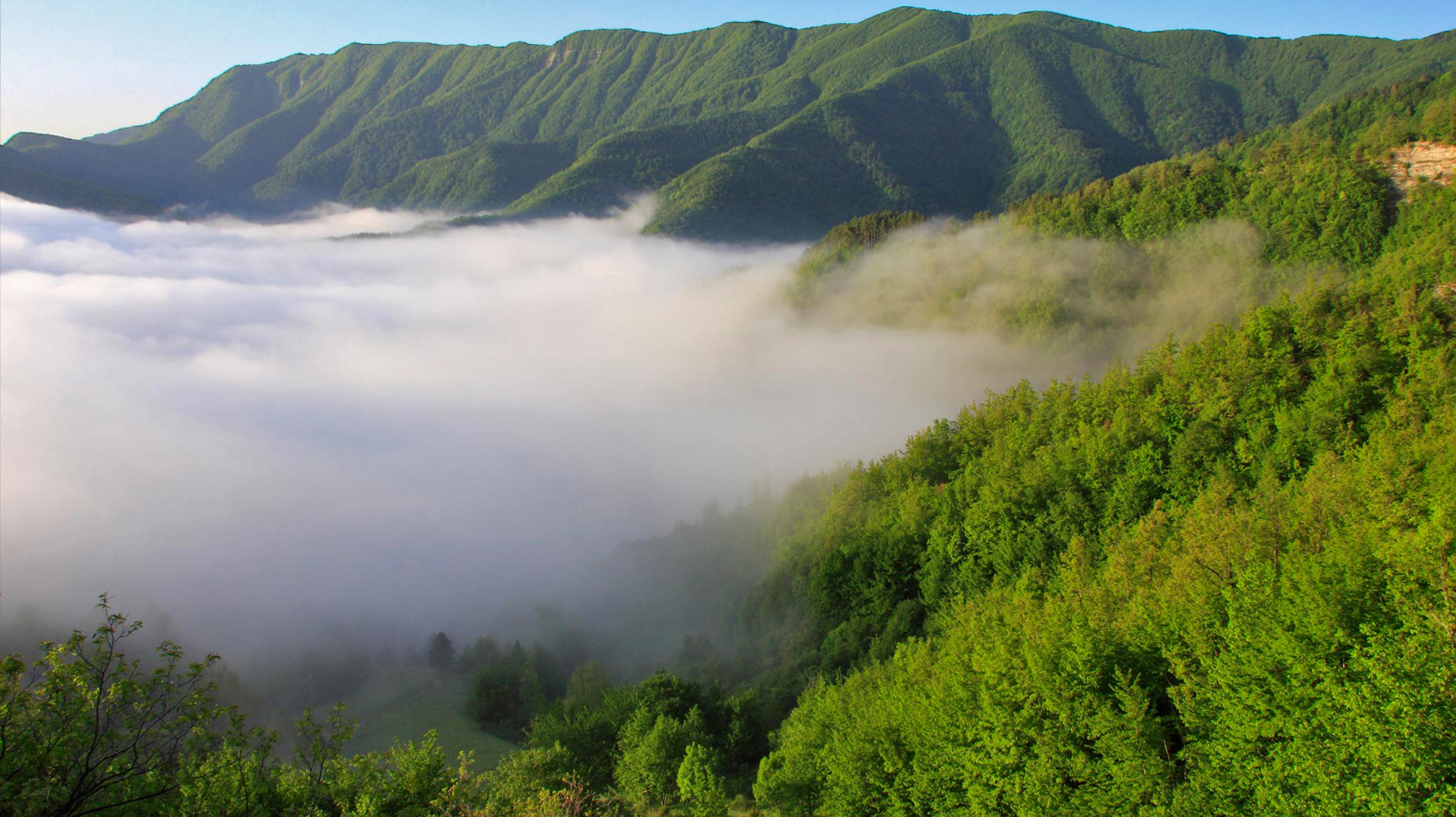
Sasso Frattino | Photo ©parcoforestecasentinesi.it
Beyond the architectural or artistic technicalities, the whole area of San Benedetto in Alpe is a privileged place where to find peace and escape the hustle and bustle of everyday life.
The pervasive Casentinesi Forests, along with the roaring of the streams of water, give a sense of peace and well-being.
You may go to the abbey for a trip or you can stay a few nights in the area and dive into the past and in the silence of these places surrounded by a comforting magical atmosphere.
San Benedetto in Alpe is also a departure point or a stop for many excursions across the greenery of the Casentinesi Forest Park, rich in history and spirituality. Among these, a mention goes to the ‘Nature Path’, which is part of the ‘Paths of the Sacred Forests’. It allows you to reach on a medium-difficulty path the famous Acquacheta Waterfalls and the nearby ‘Village of the hermits’.
There are many other pilgrimage routes such as the St. Anthony’s Walk, the Assisi Way and of course Dante’s Walk. They have been marking this area for centuries, giving it a great religious and historical importance and making it a crossroad for men, nature, and spirituality.
Author

Davide Marino
Davide Marino was born archaeologist but ended up doing other things. Rational – but not methodic, slow – but passionate. A young enthusiast with grey hair
You may also like
Portico di Romagna and San Benedetto in Alpe
by Arturo Castellini /// July 13, 2017
5 natural spots to discover in Emilia-Romagna
by Elisa Mazzini /// September 19, 2016
Breathtaking landscapes in Romagna… and where to find them
by Davide Marino /// August 6, 2018

Interested in our newsletter?
Every first of the month, an email (in Italian) with selected contents and upcoming events.
Route Planner: Sloways in Emilia Romagna
by Walter Manni /// July 31, 2024
